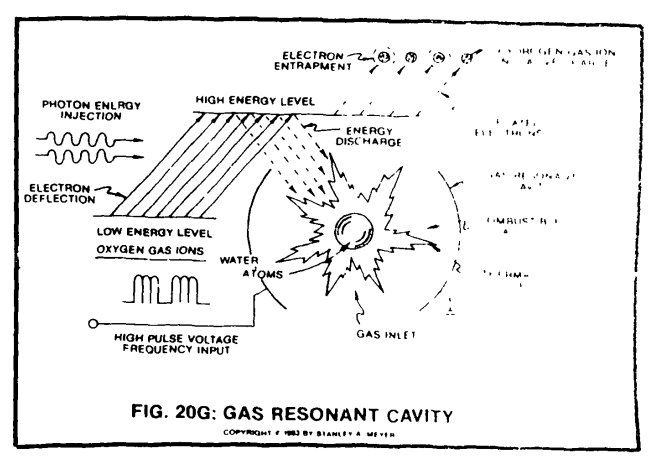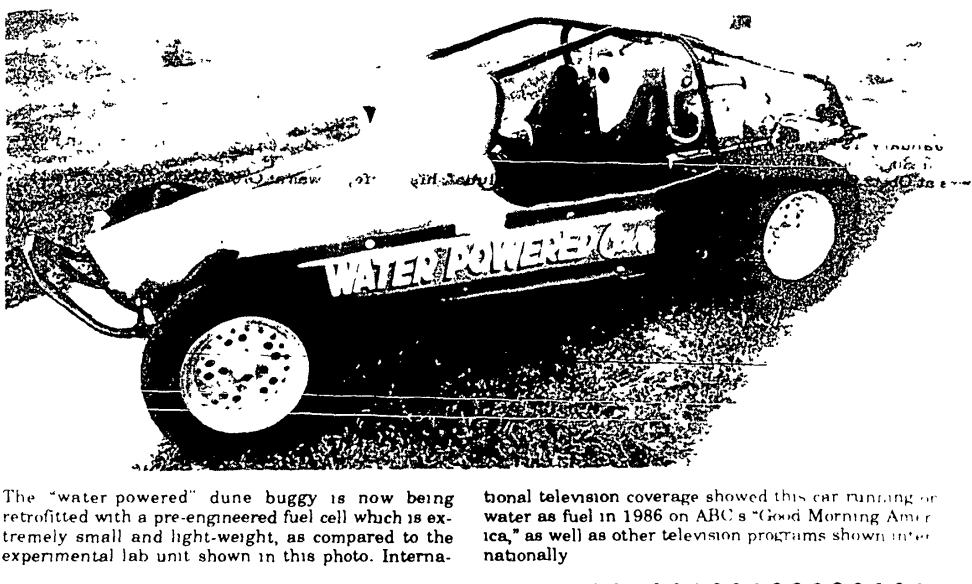Several recent breakthroughs are made in development of Meyer's fuel cell - January 21st, 1988
Author: Marcia Thompson
Source: https://grovecity.advantage-preservation.com/viewer/?k=meyer&t=30203&i=t&d=01011901-12312011&m=between&ord=k1&fn=the_grove_city_record_usa_ohio_grove_city_19880121_english_3&df=21&dt=30
Grove City resident and inventor, Stan Meyer, is announcing that land has been acquired for Phase I and II of the...
...the proposed Water Fuel Cell Product Development Trade Center and that construction of facilities is scheduled to begin soon.
 The land is located north of Washington Court House in Ohio, between Routes 62 and 35. Options on other sections of the land have been secured, giving a total of 25 acres for the development. Plans have been designed and drawings are being considered by contractors as of this date.
The land is located north of Washington Court House in Ohio, between Routes 62 and 35. Options on other sections of the land have been secured, giving a total of 25 acres for the development. Plans have been designed and drawings are being considered by contractors as of this date.
Phase I will include the engineering building, facilities, and a task force of 600 highly trained staff members to translate the Water Fuel Cell technology into development of pre-engineering models using the tech base. High-ranking military personnel are being recruited to head up the military aspects of the technology. Within 10 years, Meyer anticipates expansion to 5,000 personnel. They will work together to translate, design, and test all aspects of the system into a finished product—retrofitting products, systems capable of running vehicles, planes, home heating sources, home energy sources, industry, etc. on water power. The first three basic task forces will work together on aspects of the system for 1) trucks, 2) home heating, and 3) electrical generation for home and industrial usage.
The technical base for the inventions has all been fully developed. Since the last article, several more patent allowances have been granted. One in Canada was granted within one hour of submission, indicating how important they consider the system to be. The Water Fuel Cell technology has been given top priority in Canada, the United States, Europe, and Japan, especially in light of the recent Mid-East problems involving shipment of oil.
"We had to totally legalize the tech base first," said Stan Meyer, "if you don't, you'd be subject to control or foreign intervention to block the technology and keep it from reaching the marketplace."
He says inventors are often unaware of patent laws, and even though their ideas are remarkable, they are deprived of getting them into the marketplace or receiving financial rewards if the legal steps aren’t followed closely.
"I learned all about this in the ‘school of hard knocks’ over the years," he added, "and didn’t want to make the same mistake twice."
Meyer is releasing more information about related technological advances which have taken place as part of the Water Fuel Cell development. His "Atomic Reduction Process," which utilizes voltage stimulation to alter the atomic structure of an atom, gives scientists a new tool with which to study atoms under a controlled state.
"This tool actually bypasses the atomic collider which was recently proposed for Ohio, and instead," he says, "Scientists can tap into and observe the atom with this process as they never dreamed of before."
Another development is that scientists, by using the technology, can combine atoms to form new molecules by changing the atomic characteristics in the Atomic Reduction Process. This information can lead to the development of rare or heretofore unattainable elements.
Another by-product of the technology is Meyer's development of the Desulfurization Process, which involves voltage stimulation to remove sulfur from coal. It uses the same technology as the Water Fuel Cell system and can be retrofitted to desulfurize coal economically under mass production.
Water Fuel Cell Corporation papers are being drawn up and will be filed in Delaware. The company will be international in nature. A controlled amount of stock will be placed on a foundation, and all assets will be rotated in a trust foundation with the foundation being a religious-based institution. Production with profits to be used, Meyer says, "to do the Lord's work." Corporate charters and legal paperwork pertaining to the issuance of stock is now taking form.
The purpose of establishing a corporation is to protect the technology, said Meyer. "Secondly, it gives us an ability to tap into funding." The technology is being presented to Congress right now for applications for funding, as well as to the military, the state, and with foreign governments. The need for an answer to the oil crisis is universal. For example, funding in Canada is being negotiated for $180 million and in the Common Market countries for $350 million, as well as in Japan, which has no import tax on 97% of their energy. Negotiations are expanding into other countries wanting to use the technology
water as an energy source."
Meyer's Hydrogen Fracturing Process is based on simple knowledge. Releasing hydrogen and oxygen yields high thermal energy. That stops when the hydrogen and oxygen molecules combine to form a water molecule. Meyer has found a way to prevent this water molecule from taking place. An "avalanche effect" allows atomic energy to now take place from the hydrogen and oxygen atoms undergoing thermal gas combustion. According to Meyer, this process can be utilized for "hundreds of thousands of other applications by scientists." Current estimates of the energy produced in the process using one gallon of water is equal to that of 2.5 million barrels of oil. This pertains to atomic weight, and both oxygen and hydrogen are used in the process.
"We do it under a controlled state under high voltage," explained Meyer. "It's totally environmentally safe. There is no form of particle bombardment used in the process. It's really ultra safe."
Putting his "money where his mouth is," Meyer is now preparing a dune buggy using the Hydrogen Fracturing Process in a pre-engineering unit which he plans to take across the United States in mid-August or early September of 1988.
"We're streamlining it and designing it for high reliability," he says, "and will use it instead of a lab model. We're also negotiating right now to enter a car in the Indy 500 race. We've already located a car and have a resource which will provide three V-8, 12,000 RPM Buick engines for retrofitting. We're trying to get clearance from the Indy 500 Commissioners to introduce the car at the Indy 500 and are talking to sponsors about funding a Water Fuel Cell system specifically for that car."
Quenching Circuit Technology, which uses non-combustible gases to render hydrogen safe for high energy and high-speed racing, will be retrofitted into cars to run in such high-speed races. The technology lowers the energy of hydrogen to convert to the power rate of the high energy fuel currently used in Indy-style racing, and it also complies with existing rules and regulations.
"The car I'm working on is interested in looking at the safety aspects," said Meyer. "The only problem will be if a driver has an accident. Chances are it's going to get bad, but with Water Fuel Cell, which is simple and automatic, this is the only thing that will make water stand as a replacement for combustion fuels."
Meyer is working with NASA to utilize the Water Fuel Cell technology on manned space stations, doing preliminary work on these potential systems with the team at NASA.
As he puts it, "I'm at an exciting stage right now. Who knows exactly what the future holds?"

